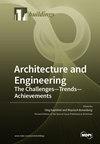Improving Mud Brick Durability in Ancient Closed-Box Tombs: A Graphene Oxide Nanoparticle Approach
IF 3.1
3区 工程技术
Q2 CONSTRUCTION & BUILDING TECHNOLOGY
引用次数: 0
Abstract
This paper presents a novel concept for significantly enhancing the strength and durability of ancient closed-box tombs. These tombs hold significant philosophical values, and their architecture serves as a valuable data source, providing insights into the cultural stage of the society in which it was constructed. Throughout medieval and modern times, clay bricks remained a prevalent material for tomb construction due to their affordability and design flexibility. However, these structures currently face neglect and weakening, requiring imperative intervention of protection to prevent them from potential deterioration or extinction. The key objective of this research is to explore the potential use of graphene oxide (GO), a novel nanomaterial, as a treatment method to enhance the durability of mud brick tombs in Aswan, Egypt. Samples of mud bricks were examined and characterized using various techniques, including SEM-EDX, TEM, PLM, XRF, XRD, and mechanical properties analysis. The results indicated that GO nanomaterials significantly improve the mechanical properties of mud brick tombs, allowing them to resist more compressive loading and ultimately resulting in more durable and long-lasting structures. By using these innovative materials, effective restoration and preservation of these ancient structures for future generations could be viable. This research has the potential to revolutionize the preservation of closed-box tombs, ensuring these historical landmarks stand longer the test of time.提高古墓中泥砖的耐久性:氧化石墨烯纳米粒子方法
本文提出了一种新颖的概念,可显著增强古代闭箱墓的强度和耐久性。这些古墓蕴含着重要的哲学价值,其建筑结构也是宝贵的数据来源,可以让人们深入了解建造古墓时所处的社会文化阶段。在中世纪和近代,粘土砖因其经济实惠和设计灵活,一直是建造坟墓的常用材料。然而,这些结构目前面临着失修和衰弱的问题,需要进行必要的保护干预,以防止其可能的恶化或消亡。本研究的主要目的是探索氧化石墨烯(GO)这种新型纳米材料作为一种处理方法的潜在用途,以提高埃及阿斯旺泥砖墓的耐久性。研究人员使用各种技术,包括 SEM-EDX、TEM、PLM、XRF、XRD 和机械性能分析,对泥砖样品进行了检测和表征。结果表明,GO 纳米材料可显著改善泥砖墓的机械性能,使其能够抵抗更多的抗压负荷,最终形成更耐用、更持久的结构。通过使用这些创新材料,为子孙后代有效修复和保护这些古建筑是可行的。这项研究有可能彻底改变封闭式古墓的保护方式,确保这些历史地标经得起时间的考验。
本文章由计算机程序翻译,如有差异,请以英文原文为准。
求助全文
约1分钟内获得全文
求助全文
来源期刊

Buildings
Multiple-
CiteScore
3.40
自引率
26.30%
发文量
1883
审稿时长
11 weeks
期刊介绍:
BUILDINGS content is primarily staff-written and submitted information is evaluated by the editors for its value to the audience. Such information may be used in articles with appropriate attribution to the source. The editorial staff considers information on the following topics: -Issues directed at building owners and facility managers in North America -Issues relevant to existing buildings, including retrofits, maintenance and modernization -Solution-based content, such as tips and tricks -New construction but only with an eye to issues involving maintenance and operation We generally do not review the following topics because these are not relevant to our readers: -Information on the residential market with the exception of multifamily buildings -International news unrelated to the North American market -Real estate market updates or construction updates
 求助内容:
求助内容: 应助结果提醒方式:
应助结果提醒方式:


